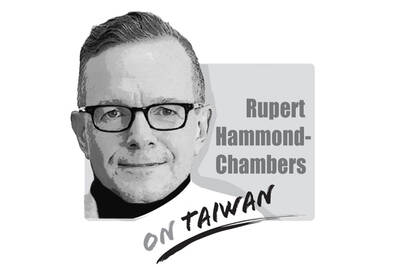The proposal to redraw the borders of counties and municipalities in Taiwan is not a new one and local and central governments have been arguing about it for a long time.
It is a question that the government will have to deal with sooner or later, but it involves many complex issues. Each time the central government has mooted the idea of rearranging the existing two municipalities and 23 counties, it has become embroiled in arguments with local authorities and the plans have had to be laid aside.
However, President Ma Ying-jeou (馬英九) has now made it clear that he is willing to handle this hot potato. On Friday, he called a meeting of senior government officials and legislators, party elders and financial mandarins to discuss and approve plans to reorganize the nation’s administrative divisions into three metropolises and 15 counties.
In the plan, Taichung City and Taichung County are to be merged in 2010 and Taipei City and Taipei County in 2014. Bold as the move may be, Ma’s haste in finalizing such a momentous plan at a closed meeting with only a few selected officials in attendance and without widespread public debate is unnerving.
The reorganization of administrative divisions involves many complex issues at both the national and local levels, including political questions such as the redrawing of electoral districts, economic questions such as the allocation of financial resources, as well as questions of culture, ethnicity and history, geographic features and regional development programs, to name but a few.
During the eight-year presidency of Ma’s predecessor, Chen Shui-bian (陳水扁), plans to redraw administrative boundaries ran into innumerable obstacles and remained on the drawing board. By contrast, Ma has rushed to put the seal on the proposed changes just seven months into his term.
Although the plan was put forward in Ma’s election manifesto, there has been no public debate since Ma took office. Not once during the formulation period of this policy has Ma called together representatives from central and local governments, ruling and opposition parties and academic institutions to exchange views on the matter. Instead, Ma chose to make the decision by pulling together a small group of senior officials and politicians. In the process, ancillary issues and complementary measures can hardly have been given sufficient attention.
Most importantly, local government elections are scheduled for next year. Unsurprisingly, Ma’s decision to start redrawing administrative boundaries at this time has sparked conspiracy theories in political circles. There are those who think that Ma’s hasty move to merge cities with their surrounding counties is designed to give the Chinese Nationalist Party (KMT) an advantage in future elections.
If this happens the DPP would find it hard to make up lost ground and could be stuck in opposition for a long, long time.
The proposed changes should be open to debate and the administration’s backroom decision-making is to be condemned. In a democracy, major policies such as this should be decided by drawing on collective wisdom. Policies pushed through without adequate debate or consideration of all the issues involved could provoke social chaos and fail to achieve their intended results.
If the government persists in pushing through its policy objectives in this manner, the nation’s democracy will regress and devolve into an oligarchy where a minority clique decides everything.

In the past month, two important developments are poised to equip Taiwan with expanded capabilities to play foreign policy offense in an age where Taiwan’s diplomatic space is seriously constricted by a hegemonic Beijing. Taiwan Foreign Minister Lin Chia-lung (林佳龍) led a delegation of Taiwan and US companies to the Philippines to promote trilateral economic cooperation between the three countries. Additionally, in the past two weeks, Taiwan has placed chip export controls on South Africa in an escalating standoff over the placing of its diplomatic mission in Pretoria, causing the South Africans to pause and ask for consultations to resolve
An altercation involving a 73-year-old woman and a younger person broke out on a Taipei MRT train last week, with videos of the incident going viral online, sparking wide discussions about the controversial priority seats and social norms. In the video, the elderly woman, surnamed Tseng (曾), approached a passenger in a priority seat and demanded that she get up, and after she refused, she swung her bag, hitting her on the knees and calves several times. In return, the commuter asked a nearby passenger to hold her bag, stood up and kicked Tseng, causing her to fall backward and
In December 1937, Japanese troops captured Nanjing and unleashed one of the darkest chapters of the 20th century. Over six weeks, hundreds of thousands were slaughtered and women were raped on a scale that still defies comprehension. Across Asia, the Japanese occupation left deep scars. Singapore, Malaya, the Philippines and much of China endured terror, forced labor and massacres. My own grandfather was tortured by the Japanese in Singapore. His wife, traumatized beyond recovery, lived the rest of her life in silence and breakdown. These stories are real, not abstract history. Here is the irony: Mao Zedong (毛澤東) himself once told visiting
When I reminded my 83-year-old mother on Wednesday that it was the 76th anniversary of the founding of the People’s Republic of China, she replied: “Yes, it was the day when my family was broken.” That answer captures the paradox of modern China. To most Chinese in mainland China, Oct. 1 is a day of pride — a celebration of national strength, prosperity and global stature. However, on a deeper level, it is also a reminder to many of the families shattered, the freedoms extinguished and the lives sacrificed on the road here. Seventy-six years ago, Chinese Communist leader Mao Zedong (毛澤東)